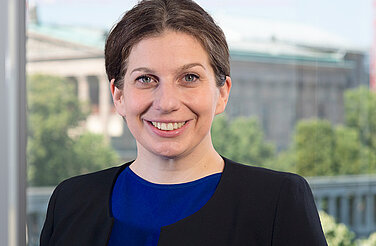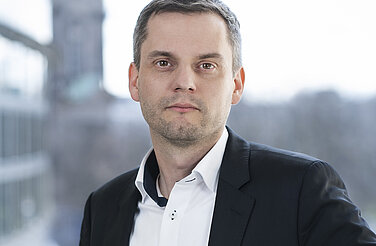-
By 2030, renewable energy can cover 80 percent of electricity consumption in Germany if the expansion of wind and solar PV is given much higher priority in combination with a paradigm shift in the development of power and hydrogen grids.
Faster planning and approval procedures and the accelerated adoption of an integrated system development plan are crucial.
-
80 percent renewable electricity by 2030 and gas-fired power plants that increasingly run on renewable hydrogen can ensure the timely phase-out of coal and enable a climate-neutral power system by 2035.
For this transition to succeed, reliable investment conditions must be ensured.
-
The switch to green electricity in industry, buildings, and transport by means of electrolysers, electric vehicles, heat pumps and electrode boilers must be implemented from the start in a manner beneficial to the overall system.
This requires a swift reform of grid charges, the intelligent operation of distribution grids and a consistent smart meter rollout.
-
Secure power grid operation with 100 percent renewable energy requires a broad technology portfolio for the provision of system services and the efficient management of grid bottlenecks.
To this end, a package of measures for reliable power grid operation given a 100 percent renewable energy share must be implemented and the introduction of location-based power-price signals must be examined.
This content is also available in: German
Climate-neutral power system 2035 (Summary)
How the German power sector can become climate-neutral by 2035

Preface
The need for action has never been greater in German energy policy. Against the backdrop of an accelerating climate crisis, and on the heels of spiking fossil-fuel prices, Germany is now facing an acute geopolitical threat to its fossil gas supplies.
The public debate is currently dominated by crisis response measures, including in particular the need to diversify fossil gas imports and ease the pressure of high energy prices. However, paramount attention should also be devoted to structural solutions – most importantly, the systematic expansion of renewables, in combination with greatly enhanced energy efficiency.
This study aims to look beyond short-term fixes and advance sustainable solutions to the current predicament. It shows how the share of renewables in German electricity consumption can be increased to 80 percent by 2030 – the first study to do so using comprehensive electricity market and grid modelling.
Achieving this target will require a massive build-out of renewables and energy infrastructure. If this build-out succeeds, it will trigger a growth dynamic that enables the achievement of a climate-neutral power system by 2035. In addition to the familiar need to act on the expansion of renewables and power grids, our findings emphasize that measures for greater electrification and demand flexibility must be developed and
implemented without delay.
Renewable electricity is the key to achieving climate neutrality, and the foundation for Germany’s future as an industrial powerhouse. The solutions are on the table, yet time is of the essence. Now is the moment for ambitious action.
Key findings
Bibliographical data
Downloads
-
pdf 2 MB
Climate-neutral power system 2035
How the German power sector can become climate-neutral by 2035
All figures in this publication
Net electricity generation in the KNS2035 scenario
Figure 1 from Climate-neutral power system 2035 (Summary) on page 6

Gross electricity consumption in the KNS2035 scenario
Figure 2 from Climate-neutral power system 2035 (Summary) on page 8









